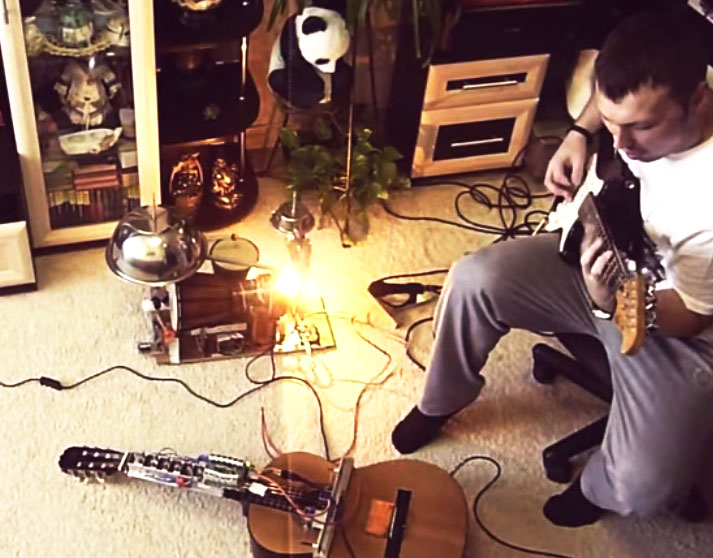
‘Social Vibes’ is a Masters Degree (MSc.) project, in Interactive Media by Cian McLysaght, at the University of Limerick, Ireland. They shared with us their project, running on Arduino Uno, composed by a physical artifact designed and created specifically for an installation adopting the fundamental sound mechanisms used in a vibraphone, know also as a ‘Vibe’:
The instrument consists of twelve musical tones of different pitches. The music created on the instrument is derived from a continuous stream of input via multiple users on Twitter and the explicit interaction from Twitter users, tweeting the instrument directly to the project’s, “@vibe_experiment” Twitter account. Data associated with the emotional status of Twitter users, is mined from the Twitter network via Twitter’s open source, application programming interface (API).
For example if a user tweets “The sun is out, I’m happy”, the code I’ve written will strip out key words and strings associated with the user’s emotional state, within the tweets, ie “I’m happy”, and translate this to a musical notation. Mining Twitter’s API, allows a continuous stream of data. These emotional states are then mapped to specific notes on the physical musical instrument, located in a public space. The tempo of the musical expression will be entirely based upon the speed and volume of the incoming tweets on the Twitter API.
Twitter users who are both followers and non followers of the musical instrument’s Twitter account (@vibe_experiment) can tweet directly to the instrument and this direct interaction will be given precedence, allowing user’s who tweet directly to have their emotional state ‘played’. This allows users to hijack or take over the instrument and experiment with it in a playful manner, but also allows those with musical knowledge the potential to compose simple musical arrangements. When users are not tweeting the instrument directly, then the instrument will revert to mining the Twitter API.
To entice users to interact and observe the action of the instrument there is a live streaming broadcast of the instrument via Twitcam on the Vibe’s Twitter account. This is a live streaming broadcast of the instrument via Twitcam on the @vibe_experiment account. Twitcam, is Twitter’s built in live-streaming platform. This simply requires a webcam and a valid Twitter account.
The instrument constantly tweets back updates to it’s own Twitter account to not only inform people of the general status but also to engage users to interact directly with the ‘Vibe’.





